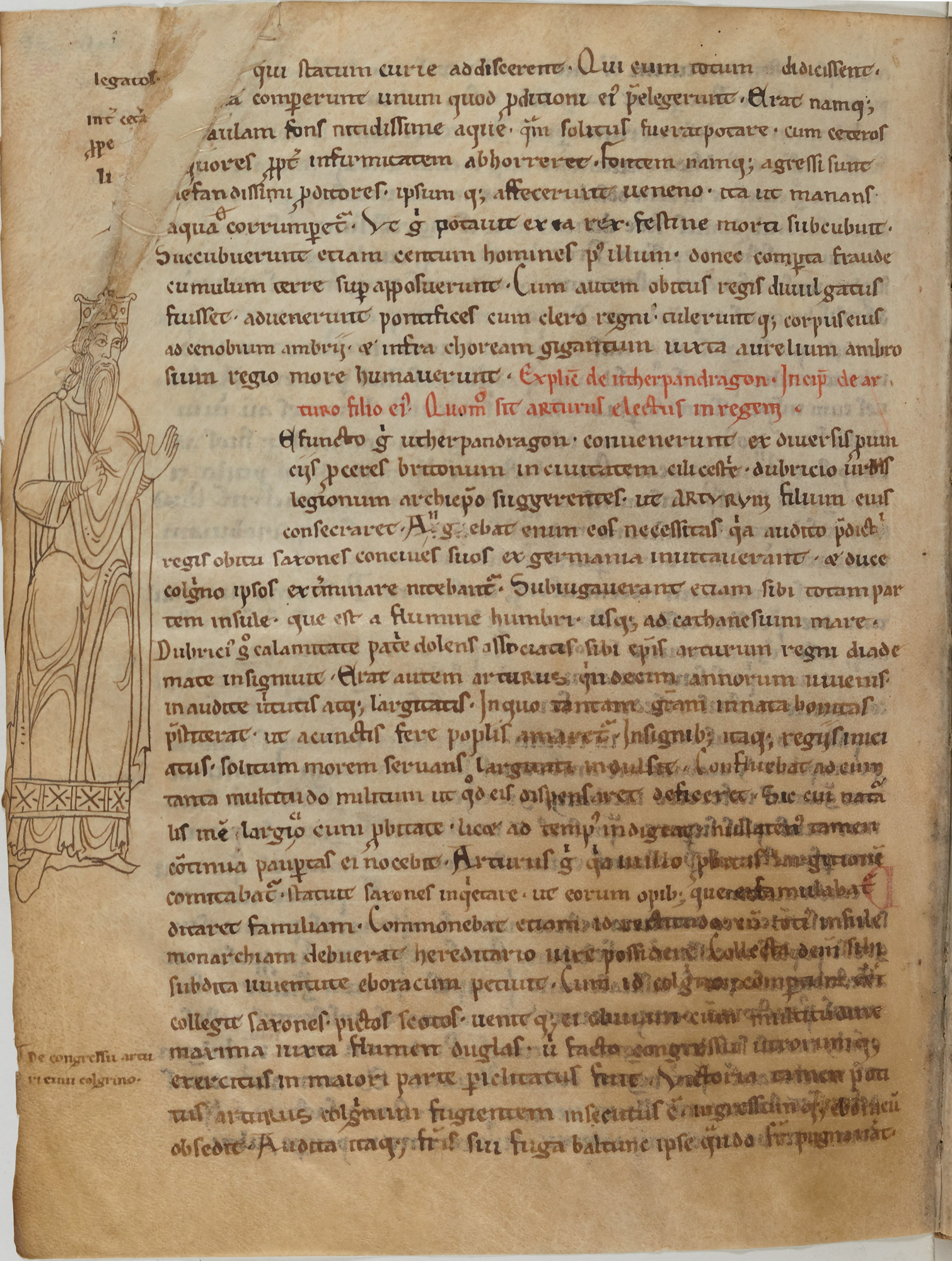Arthurian Romance

Medieval romances took many forms—there were romances set in the classical world and romances set in England. There were romances that revolved around famous people, such as Charlemagne or Alexander the Great. The most widespread and influential form of romance to emerge during the Middle Ages is the Arthurian romance. Find out more about the origins of the King Arthur legend as we know it in the following video lecture:
Geoffrey of Monmouth, King Arthur’s earliest “biographer,” was one of the most important authors of twelfth-century Britain. Watch the following video-lectures to find out why. You’ll learn, among other things, about the earliest version of the King Lear story. It differs from Shakespeare’s in some surprising ways. You’ll also learn about two of Geoffrey’s other famous creations: Merlin (proto-civil engineer) and Morgan le Fay (poster child for women in STEM).
Modes of Arthurian Narrative
- History: Exemplified in Geoffrey of Monmouth’s History of the Kings of Britain. Arthur is a formidable king and conqueror. The narrative is concerned with political issues, such as treason, invasion, forming alliances, etc.
- Romance: Exemplified in Marie de France’s Lanval, the romances of Chrétien de Troyes, and the Lancelot and Elaine section you’ll be reading from Malory’s Morte Darthur. Arthur’s knights usually displace the king as the focus of romances. Arthur is often inept or downright silly. The focus is adventure undertaken to prove one’s worth rather than for political gain. Love and magic figures prominently. Heterosexual relationships are often problematic.
- Epic: Exemplified in Thomas Malory’s Morte Darthur, which tells the story of Arthur’s rise and fall in several books, some in the historical and others in the romance mode. It also includes the highly allegorical Quest for the Holy Grail, which challenges the values that are usually enshrined in both history and romance.
Mastery Check:
- Who composed the first “biography” of King Arthur, and when did that author live?
- What Arthur emerges from the pages of Geoffrey of Monmouth’s History of the Kings of Britain?
- How does Geoffrey of Monmouth represent Arthur’s world? In what ways does it resemble Geoffrey‘s world?
- How did Geoffrey of Monmouth represent Morgan le Fay and Merlin?
- How did Geoffrey of Monmouth tell the King Lear story?
Geoffrey of Monmouth (c. 1095 – c. 1155) was a British cleric and one of the major figures in the development of British historiography and the popularity of tales of King Arthur. He is best known for his chronicle The History of the Kings of Britain (Latin: De gestis Britonum or Historia Regum Britanniae) which was widely popular in its day, being translated into other languages from its original Latin. (source: Wikipedia)